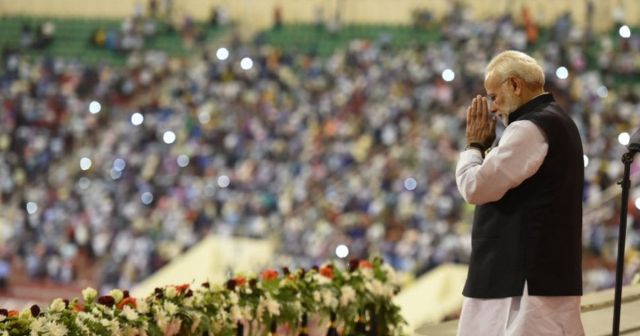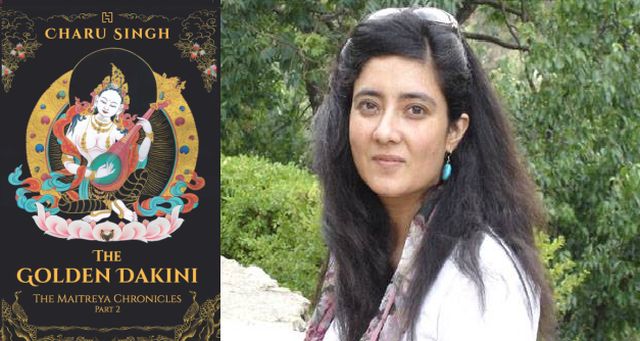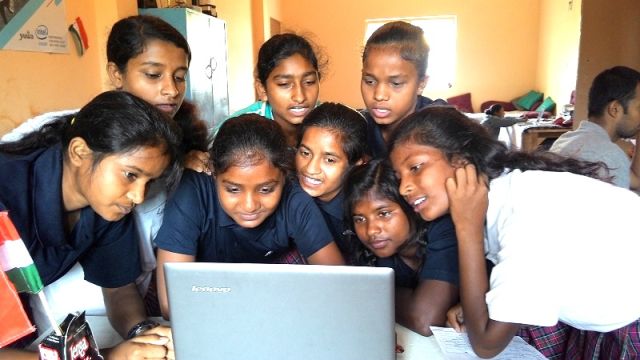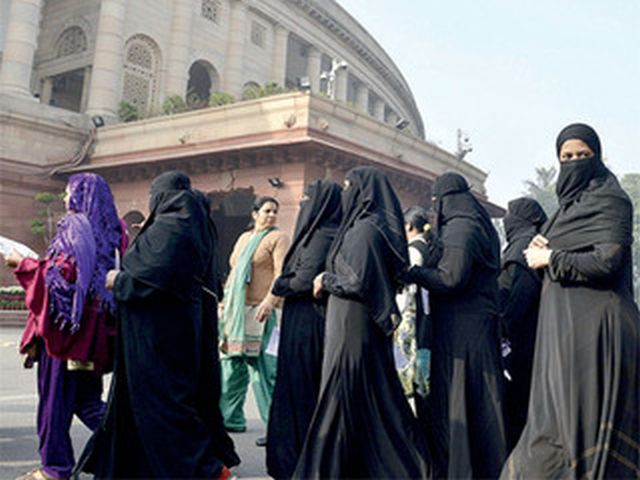
by admin | May 25, 2021 | Entrepreneurship, News, Politics, Startup Basics, Women Entrepreneur
 New Delhi : Prime Minister Narendra Modi on Sunday said the country was moving from women development to women-led development and emphasised that the dream of New India was where women were empowered, strong and an equal partner in the nation’s overall development.
New Delhi : Prime Minister Narendra Modi on Sunday said the country was moving from women development to women-led development and emphasised that the dream of New India was where women were empowered, strong and an equal partner in the nation’s overall development.
In his monthly radio address “Mann Ki Baat”, he also urged women to create self-help groups for the GOBAR DHAN initiative which may become a source of income for the rural population.
“The aim of GOBAR-Dhan scheme is to ensure cleanliness in villages and generating wealth and energy by converting cattle dung and solid agricultural waste into Compost and Bio Gas,” Modi said.
Speaking about International Womens’ Day on March 8, the Prime Minister said: “There are many programmes that are held in our country and the world. Today the country is moving forward from the path of women development to women-led development.”
Quoting Swami Vivekananda’s saying that the idea of a perfect womanhood was perfect independence, Modi said the dream of New India was where the women were empowered.
“Today, it is our duty to ensure the participation of women in every field of life, be it social or economic life, it is our fundamental duty. We are part of a tradition where men were identified due to women-Yashoda-Nandan, Kaushalya-Nandan, Gandhari-Putra, these were identities of a son.
“Today, woman power has shown inner fortitude and self-confidence, has made herself self-reliant. Not only has she advanced herself but has carried forward the country and society to newer heights.
“After all, our dream of ‘New India’ is the one where women are strong and empowered and are equal partners in the development of the country,” he said.
Referring to a suggestion from a listener, the Prime Minister urged countrymen to felicitate mothers and sisters who have completed 100 years on the occasion of International Women’s day.
“Can a programme of paying respect for such centenarians be held and can’t we reflect upon a life lived long?” he asked.
Hailing efforts of a group of women from Jharkhand who organised a hygiene campaign for an entire month and constructed 1.70 lakh toilets in just 20 days, Modi said they showed that women power was an integral component of the ‘Swachh Bharat Abhiyan’.
He mentioned the current budget in which an emphasis has been laid on turning ‘waste to wealth’ and ‘waste to energy’ through bio-gas.
“A target has been set to use cattle dung, agricultural waste, kitchen waste to produce Bio gas based energy. Under the GOBAR-Dhan Scheme, our farmer brothers and sisters will be encouraged to consider dung and other waste not just as a waste but as a source of income.”
—IANS

by admin | May 25, 2021 | Books, Entrepreneurship, Media, Success Stories, Women Entrepreneur

Charu Singh
By Saket Suman,
New Delhi : She worked as a journalist for Asian Age, Frontline and Tribune, but running behind bylines always seemed like “instant coffee” with no time to pause and appreciate the beauty of things around her. After she quit her full-time job and embarked on a journey of writing, life changed drastically for Charu Singh, whose second book was published in December.
“I wrote a lot of poetry as a young child and also continued with it in my teenage. And then I became a journalist, which, to a large extent, taught me the discipline of writing. But working as a journalist was like instant coffee; one was always looking for bylines and breaking news. I always had this thing in the back of my mind that I want to write something some day.
“Now, when I look back at the journey of writing, it has been much more satisfying. It is self-discovery of sorts, because you are finding new facets about yourself every other day,” Singh told IANS.
Singh’s first book, “Path of the Swan”, is part of a Buddhist fantasy series that she spent quite a lot of time writing. In December 2017, “The Golden Dakini”, the second book in the series, released and was widely lauded in literary circles.
In these books, Singh said, she has used elements of “Tibetan Buddhism”, especially myths centred around “the Vajrayana system of Buddhism”, which is a part of the larger Mahayana body of Buddhism.
“I have especially used the myth centred around the legendary kingdom of Shambala which is particular to Vajrayana Buddhism and is the subject of much debate and thought among monks and lay practitioners of this arm of Buddhism. In this Buddhist fantasy series I have finished the story with “The Golden Dakini”; so currently the Maitreya chronicles is a set of two books. However, there is the possibility of me doing a third book centred around the Maitreya,” she added.
Singh is not a practising Buddhist and, therefore, her exploration of Buddhism has a lot more significance for both the reader and the writer. Readers, for instance, come across sweeping landscapes in the Northeast and Leh, where majestic monasteries paint the pages of her book. The stories are not told from the perspective of a Buddhist, but from somebody who has attempted to understand the religion and then weave a fictional narrative around it.
For the writer in Singh, it has been a great experience. “The journey of my research and me simply going about learning little nuggets of Buddhism has been a fascinating experience. It opened new windows and horizons for me personally,” she quipped.
“The Golden Dakini” centres around action building up to the birth of the divine child, the Maitreya Buddha. The book begins at Qiang La, and a group of five characters travel across Tibet and make their way to Gangtok, the capital of Sikkim. They stay there for about a week and have meetings with Rimpoche Gyaltsen, who hints at the location of Mt Meru — a mystical, divine mountain mentioned in both Buddhist and Hindu legends.
The task before the group is to locate Mt Meru, which has long been lost from the public eye. As the group follows the trail of clues leading to the mountain, they reach Guwahati in Assam where they reside for some time and look for a Hindu sage who can tell them the path ahead.
A book set in exotic locations, “The Golden Dakini” is both a page-turner and a celebration of the many sublime aspects of Buddhism.
(Saket Suman can be contacted at saket.s@ians.in)
—IANS

by admin | May 25, 2021 | Opinions

For representational purpose only (google image)
By Swagata Yadavar,
If a girl in India studies for 12 years or more — till the age of 18 — she is less likely to have teenage pregnancy, less likely to have shorter interval between children and less likely to have more than two children during her lifetime, according to the latest national health data.
A woman with 12 years or more of education has her first child at the median age of 24.7, which is 3.7 years more than the median age of first pregnancy (21) for women between 25-49 years, according to the National Family Health Survey, 2015-16 (NFHS-4) report.
Almost one-third or 33.6 per cent of India’s population is born of adolescent pregnancies; delaying the onset of child bearing could reduce India’s projected 2050 population of 1.7 billion by more than a quarter.
If a woman studies for 12 years or more, she has an average of 2.01 children, compared to 2.2 for all women and 3.82 for women with no education, based on the mean number of children born to women aged 45-49 — a period that marks the end of a woman’s fertility.
“Postponing first births and extending the interval between births have played a role in reducing fertility in many countries,” said the NFHS-4 report.
The total fertility rate for women — the number of children she will have in a lifetime — between 15-49 years is even lower at 1.71 for women with more than 12 years of education compared with 3.06 to women with no education and 2.2 for all women.
“Education is the best contraceptive pill,” said Poonam Muttreja, executive director, Population Foundation of India, an advocacy working on family planning.
There is enough global evidence showing that educating women can reduce the fertility rate of countries, Muttreja said. “Now, national evidence also points that educating women can be a good population control strategy.”
Only four per cent of women with 12 years or more of education have teenage pregnancies compared with eight per cent for all women and 20 per cent for women with no schooling.
Child bearing at a very young age is associated with increased risk of complications during pregnancy and childbirth and higher rates of neonatal mortality.
Children born to educated mothers have higher chances of survival; under five mortality — deaths per 1,000 live births of children under five — of children whose mothers had no schooling was 67.5 while it was less than half (26.5) for children of mothers who had more than 12 years of schooling.
A woman with more than 12 years of education waits three years (35.7 months) to have another child, compared to 31.3 months for women with no schooling.
Birth intervals of less than 24 months can harm newborns and their mothers, causing preterm births, low birth weight and death.
Only 21.5 per cent women aged 15-49 had studied for more than 12 years, compared to 29.6 per cent of men.
In 2017, only one in five adolescents — 14 to 18 years — had completed eight years of schooling and by 18, some 32 per cent females are not enrolled in schools against 28 per cent males, according to the latest Annual Survey of Education Report.
(In arrangement with IndiaSpend.org, a data-driven, non-profit, public interest journalism platform, with whom Swagata Yadavar is principal correspondent. The views expressed are those of IndiaSpend. Feedback at respond@indiaspend.org)
—IANS

by admin | May 25, 2021 | Interviews

Swati Maliwal
By Somrita Ghosh,
New Delhi : Swati Maliwal, who will complete her term as chairperson of the Delhi Commission for Women (DCW) in the next five months, has said that not enough has been done to put an end to rapes in the national capital.
“We have done a lot of work for the cause of women and we have data to prove that. But if you ask me what is DCW’s contribution in effectively reducing or stopping rapes in the national capital, it is probably a question that at times even I ask myself. When I hear about rape cases of minor girls, I question our contribution,” Maliwal told IANS in an interview.
According to NCRB data, Delhi reported 13,803 cases of crime against women and has the maximum number of rape cases — 1,996 — in 2016.
“We need to create deterrents in the capital. People don’t feel scared because they think they can get away after committing a crime. And this has been happening. Compared to the cases registered, very few end in conviction. We need to have faster judiciary, more police strength and more forensic labs,” she added.
Maliwal, 33, was appointed the DCW chief in 2015 after the Aam Aadmi Party came to power that year. Her appointment raised questions and was looked upon as a political move.
“The Delhi government had the guts to appoint an activist to the post of chairperson. We got a lot of support from the state, there is no doubt about that. But this is because they have a vision of a woman’s panel which functions democratically,” she contended.
She pointed out that DCW has issued more notices to the state government than the Delhi Police in the last three years.
In 2016, Maliwal was dragged to court after the Anti-Corruption Branch filed an FIR on irregularities in the appointments she had made in the DCW — but she stoutly defended her actions. She is out on bail in the case.
“I alone cannot handle so many cases. When I was appointed, there were only 30 staffers and major infrastructural gaps. The earlier committee had done nothing. Cases were pending and I needed people, I needed to build a team. The appointments happened according to the procedure. There are many in the committee who are from different political parties. Anyone who is willing to actually contribute and work for DCW is welcome,” she noted.
Maliwal’s first priority on her appointment was to rescue the sex workers from the GB Road area of central Delhi and rehabilitate them. Although the DCW has been successful in rescuing many minor sex workers, she is now planning a pilot project to bring them back into society.
“There are many sex workers who want to come out of the situation but they don’t have any other option; they have lost hope of an alternative livelihood. We need to think big for the effective reformation of the sex workers of GB Road. It’s a sensitive topic and we need to do this holistically. Even if you teach them, it should be ensured that the person’s past is completely erased,” she stated.
Maliwal also expressed concern over the rising cases of children and women being trafficked in the national capital and lamented the lack of support from the Centre for the DCW’s activities.
“There is only silence in response to our requests, whether it is about women being trafficked, rape cases, deploying more police for ensuring safety and the utilisaion of the Nirbhaya Fund. I have met the Home Minister, have written several letters — but there has been no response. It’s unfortunate,” she said.
Asked why the central government had not bothered to reply to the DCW, Maliwal said this “may be” due to the differences between the state and the Centre.
“I don’t want to get into the politics of the situation. I don’t think that should be the case — but it can be one of the reasons,” she said.
On her plans if she gets another term, Maliwal said that she is not concerned one way or the other, adding it was for the Delhi government to take a call.
“I am not expecting anything. I live in the moment. My priorities will be the same — which have been already set. Three years is much too less a time to bring about major changes because it takes time to understand how a system works. Whether I am there or not, I will set the system in a way that the work will go on,” Maliwal concluded.
(Somrita Ghosh can be contacted at somrita.g@ians.in)
—IANS

by admin | May 25, 2021 | Opinions
 By Alison Saldanha,
By Alison Saldanha,
In its urgency to push through the Triple Talaq Bill, the government appears to have overlooked five criminal laws relating to women and marriage identified in 2015 by a government committee as needing immediate political attention.
These are: Criminalising marital rape; clarifying the definition of “cruelty by husband and his relatives”,;plugging a loophole in the anti-dowry law; ensuring the same age of marriage for women and men; and outlawing khap panchayats that impinge on the right to choose whom one wants to marry.
In its assessment of women and criminal law, the committee, formed in 2013 — 25 years after the last such panel — lists several recommendations, not restricted to Muslim personal laws alone, to help women through legislation and the justice system.
Less than a handful of these recommendations have been initiated.
“Improving the legal status of women involves a multi-pronged approach that looks first and foremost at the legislative inadequacies and state policies and schemes closely, followed by addressing the inadequate implementation of laws by the State, police and courts,” the report said.
Criminalise marital rape: Currently, there is no legal recourse for victims of marital rape as section 375 of the Indian Penal Code (IPC), 1860, provides an exception to marital rape.
“The exemption of marital rape stems from a long outdated notion of marriage which regarded wives as no more than the property of their husbands,” the report observed, adding that “the relationship between the perpetrator and the victim should be irrelevant in evaluating consent”.
Supreme Court advocate Karuna Nundy, who has argued for criminalising marital rape, pointed out that cases of marital rape may be filed under section 498-A of the IPC relating to “cruelty by husband and his relatives”.
“However, these laws treat victims of marital rape differently from other victims and also limit their access to compulsory free healthcare and legal aid otherwise provided to victims of rape,” Nundy told IndiaSpend. “The justice served in these cases is also limited as the perpetrators of this kind of rape are subjected to non-rape penalties that are much lighter in comparison.”
Expand definition of marital cruelty: Under section 498-A of the IPC, which refers to “cruelty by husband or relatives of husband”, the law seeks to punish the husband or his family for harassing a woman to the point of driving her to suicide or for coercing her to meet unlawful demands. If found guilty, the accused can be jailed for a term extending to three years or be fined.
Over a third, or 34 per cent (110,378 cases) of 325,652 serious crimes against women reported in 2016, were filed under section 498-A, showed National Crime Records Bureau (NCRB) data for 2016. This was the most among all categories of crimes against women reported that year.
“These numbers are still low compared to the number of cases where police turn away victims of various kinds of abuse that are not merely physical,” said Flavia Agnes, women’s rights lawyer. “Since it is not clearly defined under the current law, these cases are often not registered.”
The committee has recommended that the definition of cruelty be reviewed to include “the varied forms of violence against women in the home and to ensure that it is in line with the definition of ‘domestic violence’ given under the Protection of Women from Domestic Violence Act (PWDVA), 2005”.
The Act seeks to protect and shelter women who report to be facing any kind of abusive behaviour by her husband/male partner or their relatives (male and female). It clearly defines and expands the concept of abuse to include not only the physical but also verbal, emotional, sexual and economic.
As many as 31 per cent of ever-married Indian women have experienced physical, sexual, or emotional spousal violence, according to the National Family Health Survey, 2015-16. The most common type of spousal violence is physical violence (27 per cent), followed by emotional violence (13 per cent), while six per cent of ever-married women have experienced spousal sexual violence.
Amend anti-dowry law: Currently, the Dowry Prohibition Act, 1961, prohibits the giving or taking of dowry. An offender is subject to a minimum of five years’ imprisonment. The committee reiterated the amendments to the anti-dowry law proposed by the National Commission for Women (NCW) — widen the definition of dowry and lower the penalty levied on the giver of dowry. It recommended that stridhan (all the movable, immovable property, gifts and so on a woman receives in her lifetime) be included in the definition of dowry; and also that the legal provisions that allow a husband to inherit this stridhan be deleted.
However, in July 2017, the Supreme Court of India struck down the use of section 498-A in dowry cases, putting an end to the immediate arrest of the husband and his family in dowry cases. The court’s decision was based on the high acquittal rate in dowry cases reported under section 498-A — a median 81 per cent over the decade to 2015.
However, for a decade from 2005 to 2015, 88,467 women, or an average of 22 each day, died in dowry-related cases, indicating how little has changed despite the existence of an anti-dowry law for nearly six decades. In 2016 alone, 1,354 dowry deaths were reported, NCRB data showed.
Same minimum age of marriage: The Prohibition of Child Marriage Act of 2006 outlaws child marriages — where the a boy is under 21 years of age or the girl, under 18.
The committee recommended that the minimum age be made the same. “Child marriage is not just a social norm but denial of childhood with irreversible consequences, especially for girls,” the report said.
Underage marriages, especially of girls, are rising in urban India and declining in rural India.
Criminalise khaps ordering honour killings: “Unequal economic, social and political status and position of women is an outcome of patriarchy and the deeply entrenched socio-cultural stereotypes about women. This is sometimes perpetuated by laws, regulations and policies which do not sufficiently address the subordinate status of women,” the report said.
“Honour killing is not just a way of punishing the one who has brought dishonour to the family, it is indeed a barbaric murder usually of girls.”
Since 2014 — when the NCRB started recording data on honour crimes — to 2016 honour crimes more than doubled, from 28 cases to 71 cases. In 2015 alone, 192 honour killings were recorded, NCRB data showed.
To address the high rate of such killings and their gender skew, the committee recommended a separate legislation. This would involve the shifting of criminal consequences of the extra-judicial honour killings on the khap panchayats that order them.
The committee also recommended mandatory police and legal protection for couples/women/children/families who approach any institution fearing harm at the hands of family members or community.
“Violence against women has been acknowledged as one of the crucial social mechanisms by which women are forced into a subordinate position compared with men and therefore a violation of women’s equality rights,” the report said.
“Passing legislation however does not indicate judicial or executive sensitivity to women’s rights. Faithful implementation of the laws is thus the essence for good governance.”
(In arrangement with IndiaSpend.org, a data-driven, non-profit, public interest journalism platform, with whom Alison Saldanha is an assistant editor. The views expressed are those of IndiaSpend. Feedback at respond@indiaspend.org)
—IANS

 New Delhi : Prime Minister Narendra Modi on Sunday said the country was moving from women development to women-led development and emphasised that the dream of New India was where women were empowered, strong and an equal partner in the nation’s overall development.
New Delhi : Prime Minister Narendra Modi on Sunday said the country was moving from women development to women-led development and emphasised that the dream of New India was where women were empowered, strong and an equal partner in the nation’s overall development.



